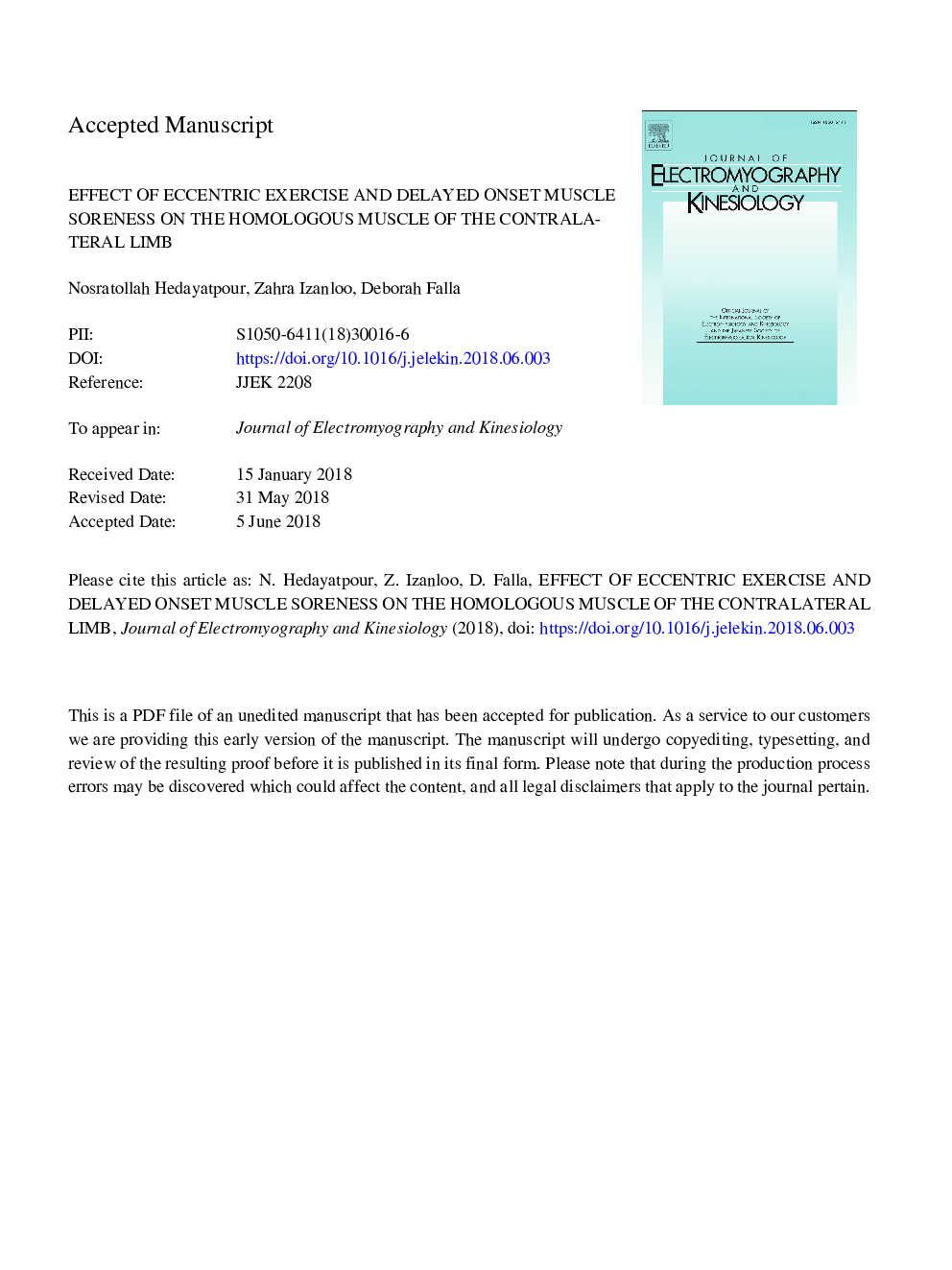| Article ID | Journal | Published Year | Pages | File Type |
|---|---|---|---|---|
| 8799781 | Journal of Electromyography and Kinesiology | 2018 | 32 Pages |
Abstract
High intensity eccentric exercise induces muscle fiber damage and associated delayed-onset muscle soreness (DOMS) resulting in an impaired ability of the muscle to generate voluntary force. This study investigates the extent to which DOMS, induced by high intensity eccentric exercise, can affect the activation and performance of the non-exercised homologous muscle of the contralateral limb. Healthy volunteers performed maximal voluntary contractions of knee extension and sustained isometric knee extension at 50% of maximal force until task failure on both the ipsilateral exercised limb and the contralateral limb. Surface electromyography (EMG) was recorded from the ipsilateral and contralateral knee extensor muscles (vastus medialis, rectus femoris, and vastus lateralis). Maximal isometric knee extension force (13.7% reduction) and time to task failure (38.1% reduction) of the contralateral non-exercised leg decreased immediately after eccentric exercise, and persisted 24â¯h and 48â¯h later (pâ¯<â¯0.05). Moreover, the amplitude of muscle activity recorded from the contralateral knee extensor muscles was significantly lower during the post exercise maximal and submaximal contractions following high intensity eccentric exercise of the opposite limb (pâ¯<â¯0.05). Unilateral high intensity eccentric exercise of the quadriceps can contribute to reduced neuromuscular activity and physical work capacity of the non-exercised homologous muscle in the contralateral limb.
Related Topics
Health Sciences
Medicine and Dentistry
Orthopedics, Sports Medicine and Rehabilitation
Authors
Nosratollah Hedayatpour, Zahra Izanloo, Deborah Falla,
